It's commonly called a "passion butterfly," but we call it a Gulf Fritillary (Agraulis vanillaea) or Gulf Frit.
Or "spectacular."
A sure sign of autumn:
- A skeletonized passionflower vine (Passiflora)
- A Gulf Fritillary (Agraulis vanillae) eclosing
- A ravenous caterpillar crawling along a stem, and
- A caterpillar J'ing, about to form a chrysalis.
The orange-reddish butterfly, with its silver-spangled underwings, is a glorious butterfly.
How's the population doing this year?
Butterfly guru Art Shapiro, UC Davis professor of evolution and ecology, who has monitored the butterfly populations of central California for more than four decades and posts his research on Art's Butterfly World, says this year the Gulf Frit population is "spotty; locally abundant but less generally distributed than in recent years."
His 10 field sites stretch from the Sacramento River Delta through the Sacramento Valley and Sierra Nevada mountains to the high desert of the Western Great Basin.
We notice the ups and downs of the Gulf Frit population every year in Vacaville. This spring they were slow to start, Western scrub jays and European paper wasps grabbed what few caterpillars there were. In the summer, the population speeded up. And now caterpillars and chrysalids cover two of our three vines--or what's left of our three vines.
Shaprio says the Gulf Frit was introduced into southern California in the 19th century, in the vicinity of San Diego in the 1870s. It was first recorded in the Bay Area before 1908. "It became a persistent breeding resident in the East and South Bay in the 1950s and has been there since." Once prevalent in the Sacramento area in the 1960s, it "seems to have died out by the early 1970s," he said. Then in 2009, it began making a comeback in the Sacramento area.
Meanwhile, the passionflower vine climbs our fences with reckless abandon, only to be skeletonized by the growing population of Gulf Frits. They eat the leaves, the flowers, the fruit, and then start in on the bark.
More Gulf Frits mate. More eggs, caterpillars, chrysalids and adults appear. The cycle continues until the first frost. The plants die back, and will recover in the spring. A few chrysalids will remain, clinging to the vines like leftover Christmas tree ornaments,
Surprises occur. Several years ago, we saw a Gulf Frit laying an egg on Christmas Day.
Attached Images:
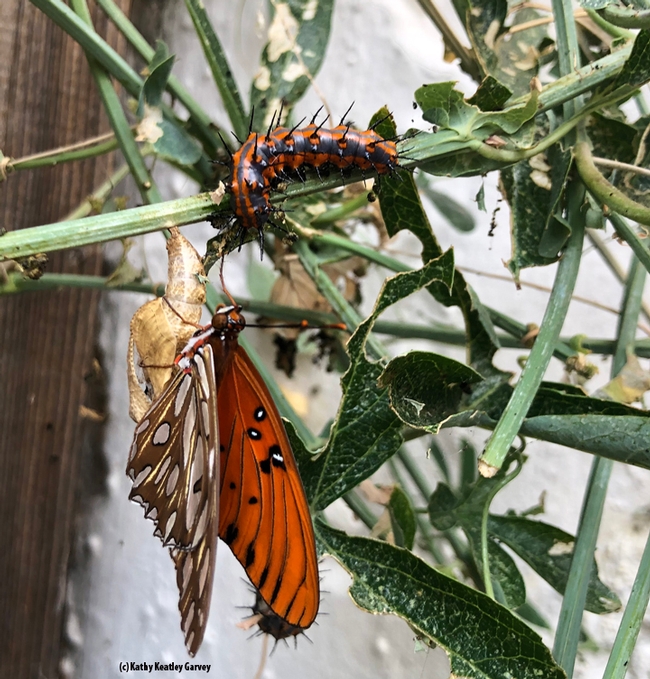
A newly eclosed Gulf Fritillary dries its wings while a caterpillar crawls around looking for food. (Photo by Kathy Keatley Garvey)
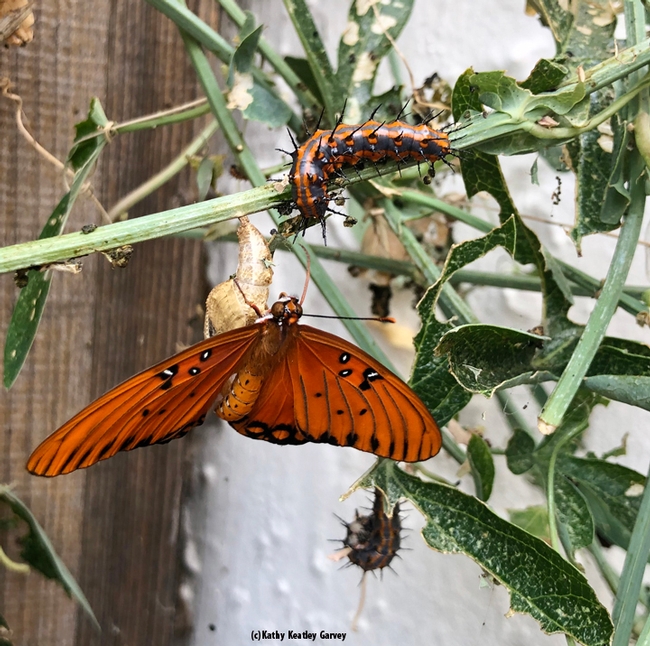
This image shows a Gulf Fritillary, a chrysalis, a caterpillar and a caterpillar J'ing, about to form a chrysalis. (Photo by Kathy Keatley Garvey)
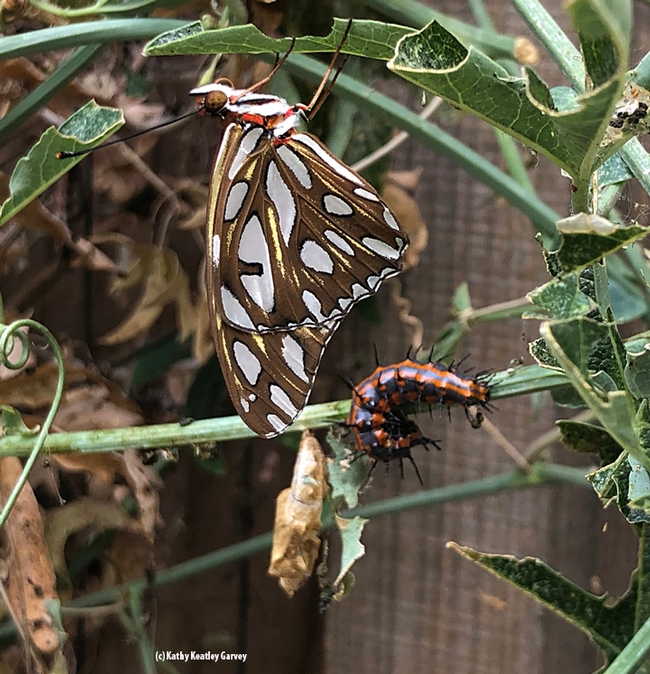
The silver-spangled underwings of the Gulf Fritllary--in sharp contrast to the orange-reddish wings. (Photo by Kathy Keatley Garvey)
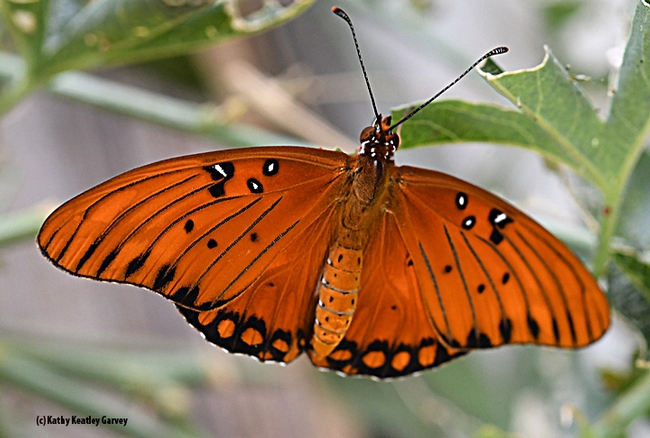
The Gulf Fritillary spreads its wings. (Photo by Kathy Keatley Garvey)
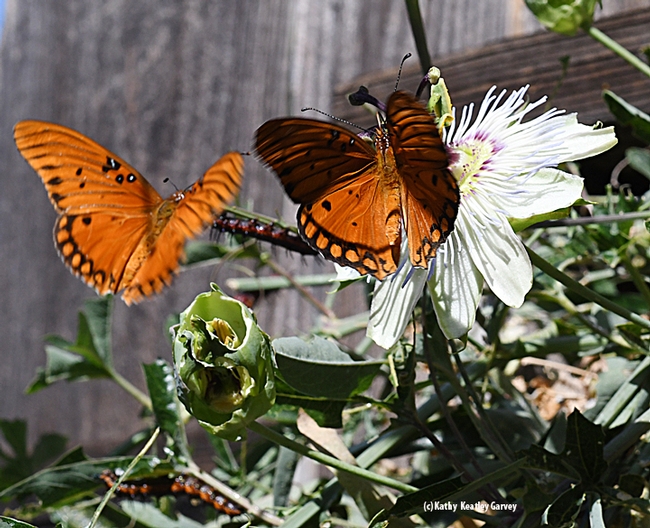
Well, hello, there! Another Gulf Fritillary arrives on the scene. (Photo by Kathy Keatley Garvey)